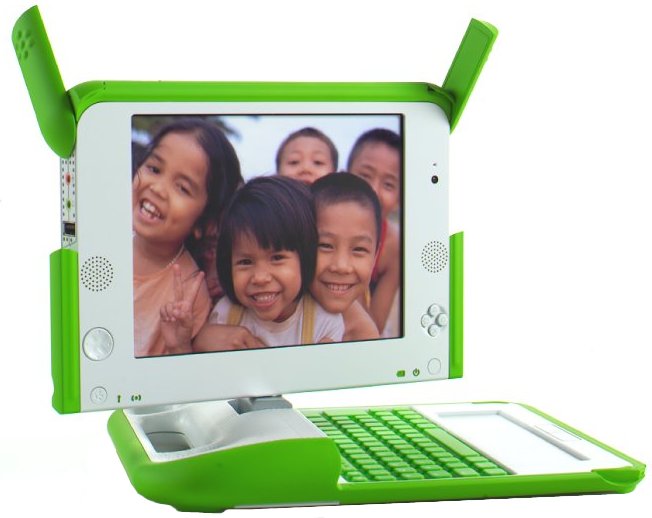 One Laptop Per Child or OLPC initiative aims to provide low-cost laptops to the educational market. These computers feature a special, education-focused operating system designed to work with a School Server that can provide content distribution, homework collection, backup services, Moodle integration, and filtered access to the Internet. The main advantage of this operating system is a thorough and well researched educational foundation. According to Sugar Labs:
One Laptop Per Child or OLPC initiative aims to provide low-cost laptops to the educational market. These computers feature a special, education-focused operating system designed to work with a School Server that can provide content distribution, homework collection, backup services, Moodle integration, and filtered access to the Internet. The main advantage of this operating system is a thorough and well researched educational foundation. According to Sugar Labs:
Based upon 40+ years of educational research at Harvard and MIT, Sugar promotes studio thinking†through demonstrations, projects, and critiques, as well as “studio habits of mindâ€, by developing craft, engagement, persistence, expression, observation, reflection, and exploration. In the context of sugar, studio thinking is applied not just to the arts, but to all disciplines.
Reflective practice involves students applying their own experiences to practice while being mentored by domain experts. In the context of Sugar, the expert could be a teacher, a parent, a community member, or a fellow student.
At the same time, Sugar is flexible; it works coherently with the wide variety of instructional frameworks, deepening the student’s learning experience. Sugar also provides access to Internet learning resources.
While Sugar is designed for elementary school classrooms, it will hold the interest of middle schoolers as well.
Not many people or educators have had a chance to explore the new OLPC XO or the Sugar operating system but now you can at least take the software for a spin on your Windows or Mac PC using Sugar on a Stick software and a 1 GB USB drive. The software offers many new and interesting options for educators looking to keep technology use in the classroom rooted in established pedagogy.
Visit Sugar Labs for more details and the download.
 One Laptop Per Child or
One Laptop Per Child or 

 concept easier for students to “see†and understand.
concept easier for students to “see†and understand.